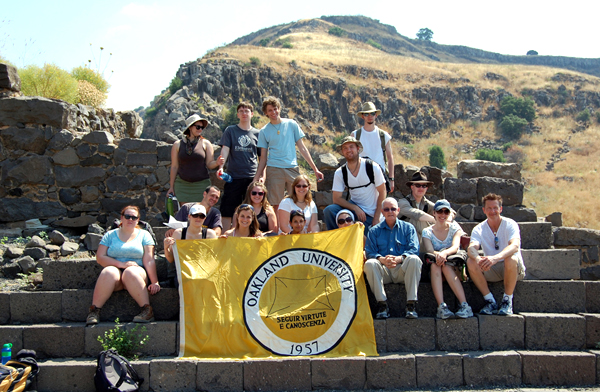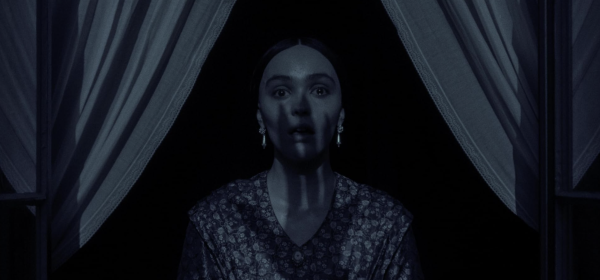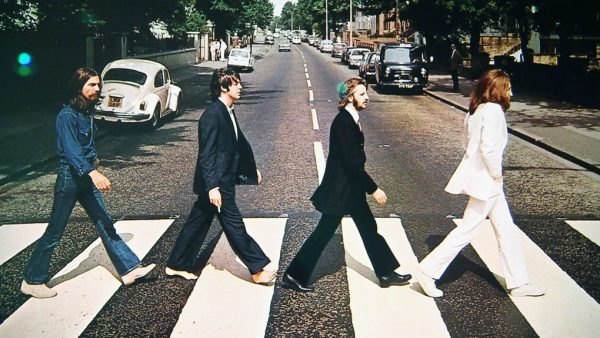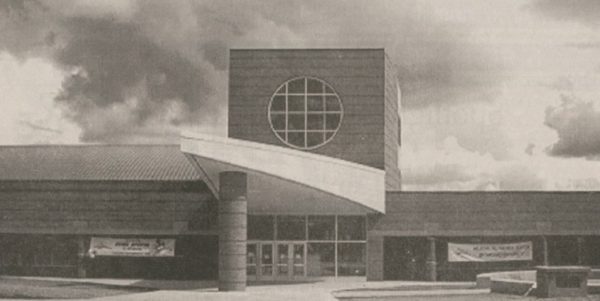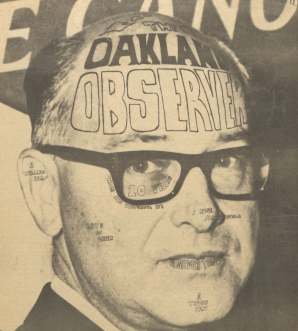Dig in Israel attracts OU
Oakland University students are getting their hands dirty and unearthing ancient history in Israel.
Twelve students made the journey to Israel for three weeks this summer to take part in an excavation on the border of ancient Israel and Philistine dating back to around 1000 BC — the Iron Age and era of the biblical King David.
Professor Mike Pytlik, who teaches Archaeology of Israel (AN 392) during the winter semester, began taking students to the site in the summer of 2009 and the trip has expanded every year.
“We focus on making it a field school for our archaeology students and anthropology students. They not only participate in the excavation, but they have certain things they do while they’re on the site, assignments if you will,” Pytlik said.
Some of the students’ assignments include working with the Hebrew University staff to sort and analyze pottery, taking measurements and making drawings.
“(The trip) was an eye-opener and reconfirmed what we learned in the classroom,” Heather Grewette, a senior majoring in anthropology, said. “Working with other students at such an important site was a once-in-a-lifetime experience for me.”
The opportunity, however, is not limited to archaeology and anthropology majors.
Kayla Horn, a senior studying nursing, went on the trip this summer.
“I cannot express in words at all how I felt standing there and being somewhere that someone lived and thrived in 3,000 years ago,” Horn said. “Holding those things in your hands — it’s indescribable.”
Also present at the dig were students from Southern Adventist University, students and staff from Hebrew University and individuals interested in joining the scene.
Pytlik and others believe that the site, just 23 miles or so from Jerusalem, is an Israelite border port mentioned in the biblical story of David and Goliath.
“We think we’re digging one of those sites mentioned in that story and we have some good evidence that supports that,” Pytlik said.
Among the evidence is the fact that the site’s name, Sha’arayim, means “two gates” in Hebrew and a two-gated city was cited in the biblical story.
“All of the cities in the Iron Age and most all the cities in Israel, even in later periods, had only one gate,” Pytlik said. “(Sha’arayim) is the only site yet known in the whole country that has two gates.”
While there this summer, the Israeli news came out to film the careful extraction of a large iron spearhead by Emily Tissot, an anthropology student at OU.
Other news organizations such as CNN, BBC, National Geographic and the New York Times, according to Pytlik, have also featured the site.
“It’s a very interesting site because of all the questions (surrounding) the extent of David’s kingdom (and whether) David was a real king,” he said.
Piecing information together, such as the time period, the pottery, the chronology, the dates, the geographic reference and the biblical story gives archaeologists a little more detail about David’s kingdom.
“This trip has made me think that I’d rather stay in archaeology than continue on in cultural anthropology like I had originally planned,” Grewette, who will graduate in December, said.
The whole site is about six to seven acres and encompasses an oval-shaped walled settlement comprised of approximately 100 houses.
Among the findings at the site are tremendous amounts of pottery, iron jewelry, vessels with olive pits and grain preserved inside of them and, most notably, an inscription pre-dating the earliest Hebrew writing ever found.
“In 2008, the oldest Hebrew inscription was found on a piece of pottery, which is now quite famous, quite an important find,” Pytlik said.
Adding to the mystery of Sha’arayim, it was only used probably for 50 or 60 years and then destroyed and abruptly abandoned, according to Pytlik, only to be settled again about 500 or 600 years later during the Hellenistic period.
Students also enjoyed excursions on the weekends.
Their destinations included ancient sites such as Socoh and Azekah (both mentioned in the David and Goliath narrative), Hippos and Gamla. Students experienced staying in both a kibbutz and a hotel in Jerusalem. They visited the Dead Sea, as well as the Temple Mount and the Western Wall in Jerusalem.
“(I loved) how they consider Jerusalem as part of their life, culture, duty. It was amazing to be a part of that,” Horn said. “It was so moving to put your hand on the (Western Wall), so old and incredible.”
Thanks to generous donor funds and research grants, the students only had to supply about half the cost of the trip.
If interested about the class and/or trip, contact Mike Pytlik at [email protected].



